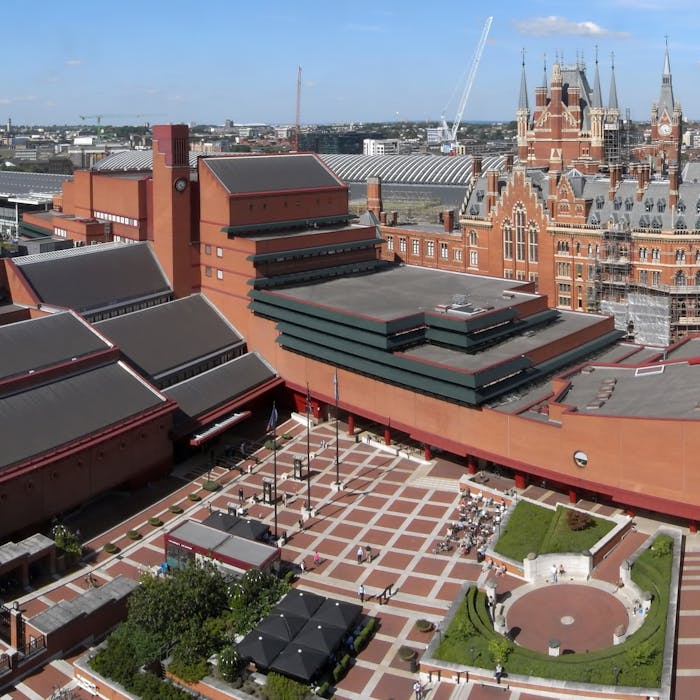
The British Library
You might imagine that the British Library was a venerable institution founded by some Georgian or Victorian philanthropist - but you would be wrong. Surprisingly, the British Library was founded in 1973!
Sitting in a purpose-built building near St Pancras Station in London, the British Library is the national library of the United Kingdom and is one of the largest libraries in the world. It is estimated to contain between 170 and 200 million items from all over the world.
As a legal deposit library, the British Library receives copies of all books produced in the United Kingdom and Ireland, including a significant proportion of overseas titles distributed in the UK. The Library is supported by the Department for Digital, Culture, Media and Sport.
The British Library came into existence in 1973 as a result of the British Library Act. Parliament’s vision was for a single institution at the heart of the UK’s information network, which would aid scientific and technological research, business, the arts and humanities.
To make this happen, several organisations were brought together to create a national library. The most important of these was the British Museum Library, founded in 1753, which contained one of the world’s largest collections of books, manuscripts and periodicals.
The iconic Round Reading Room of the British Museum Library welcomed many famous visitors including Charles Darwin, Charles Dickens, Karl Marx, George Bernard Shaw and Virginia Woolf. Lenin too applied for a Reader ticket, adopting the pseudonym Jacob Richter to cover his tracks from the Russian authorities.
Initial plans for the British Library required demolition of an integral part of Bloomsbury – a seven-acre swathe of streets immediately in front of the Museum, so that the Library could be situated directly opposite. Objectors to this plan eventually got their way, and the new British Library building was built near St Pancras to a design by Sir Colin St. John Wilson, opening to the public in 1997. The Library is the largest public building constructed in Britain in the last 100 years.
Some of the collection is housed in Yorkshire, comprising low-use material and the newspaper and Document Supply collections. This is around 70% of the total material the library holds and is sent to London when requested via a daily shuttle service.
The British Library automatically receives a copy of every item published in Britain. It has a sound and moving image archive. It has also been archiving British websites (those with the suffix .uk) since 2013.
The Library is open to everyone who has a genuine need to use its collections. Anyone with a permanent address who wishes to carry out research can apply for a Reader Pass. In practice, though, only those wishing to use specialised material unavailable in other public or academic libraries would be given a Reader Pass.
Parts of the building are open to the public with free permanent and temporary exhibitions, cafe, and places to study.
Further reading
Links to external websites are not maintained by Bite Sized Britain. They are provided to give users access to additional information. Bite Sized Britain is not responsible for the content of these external websites.
